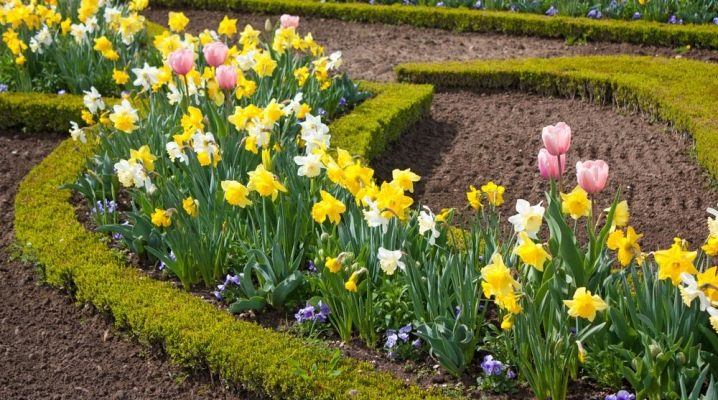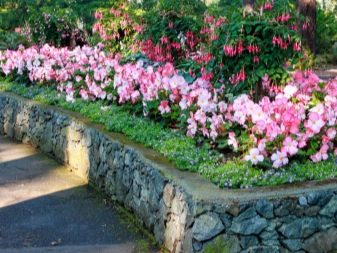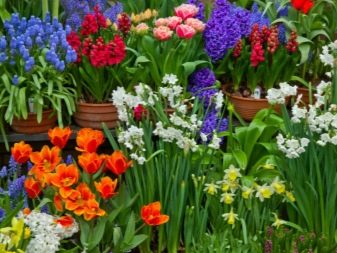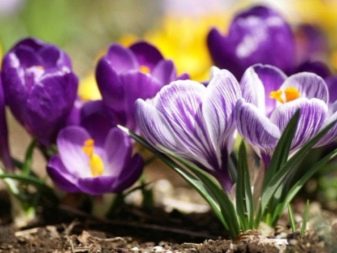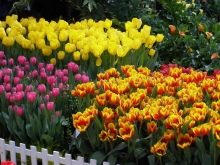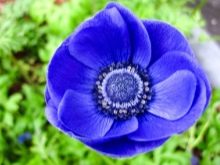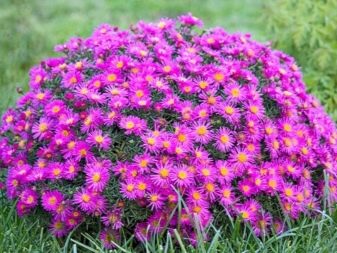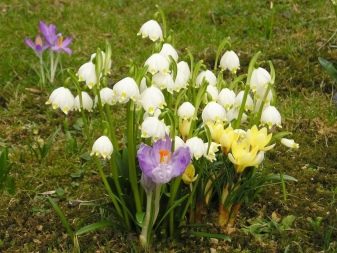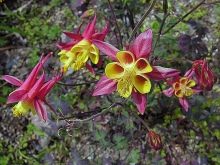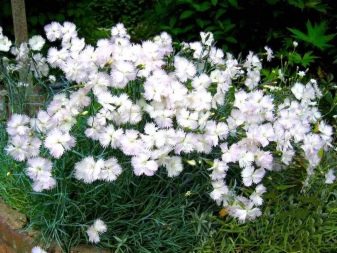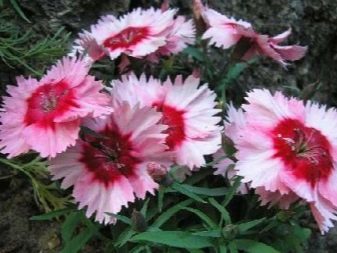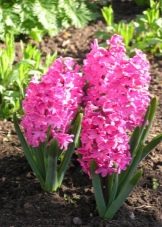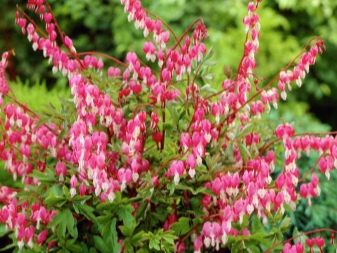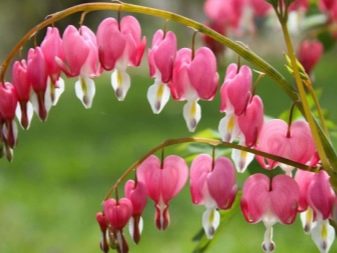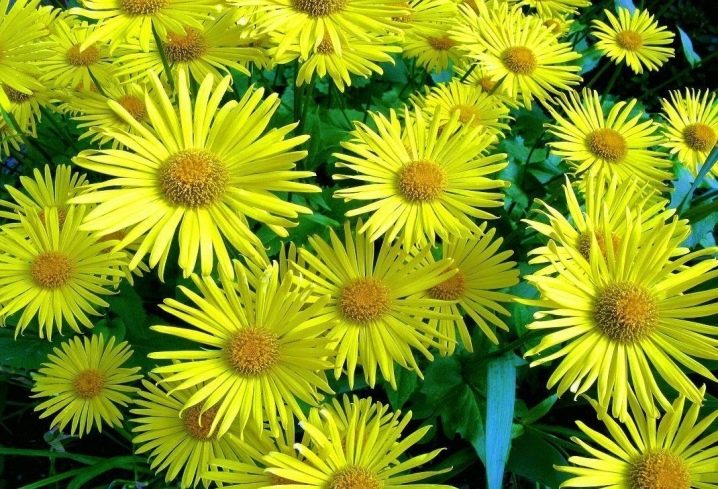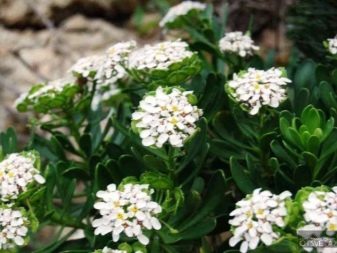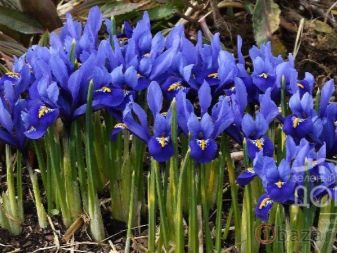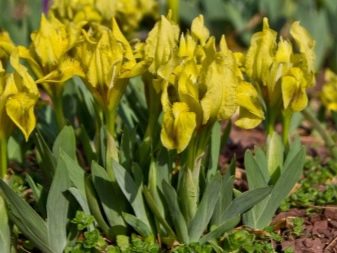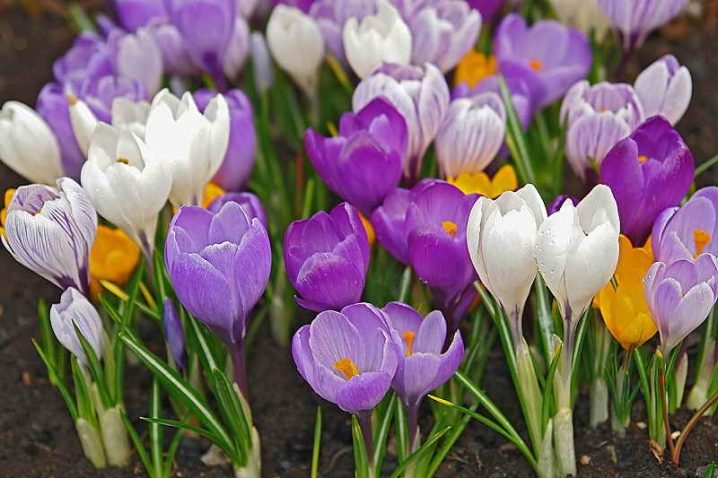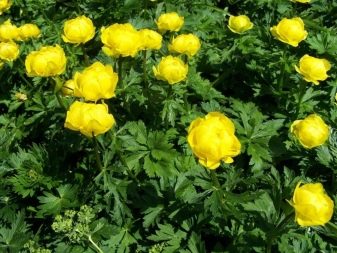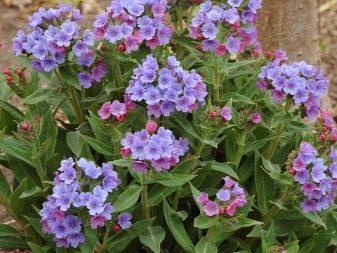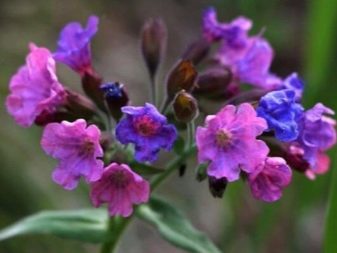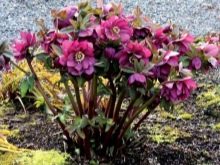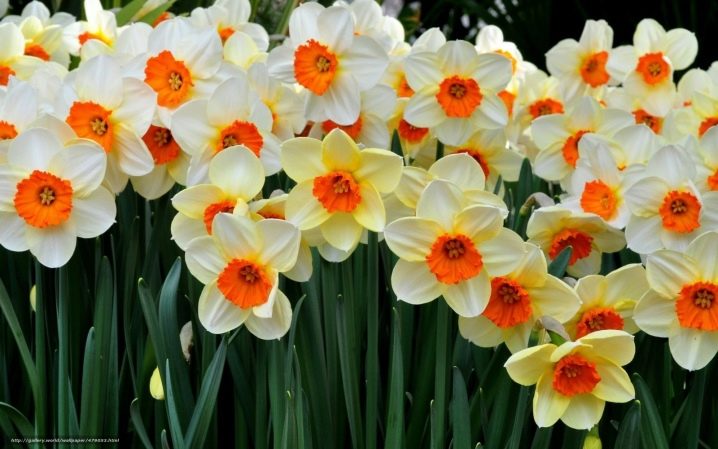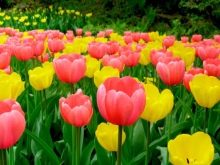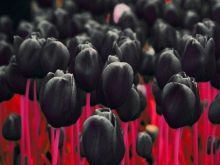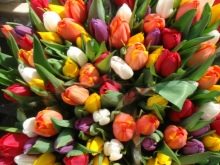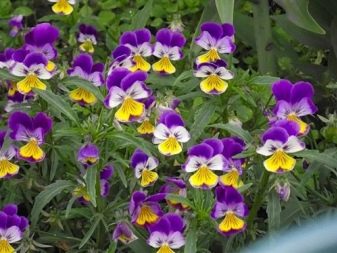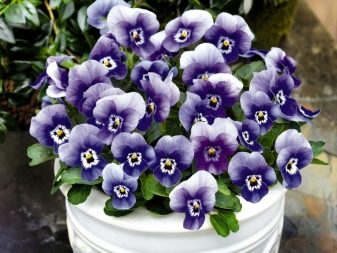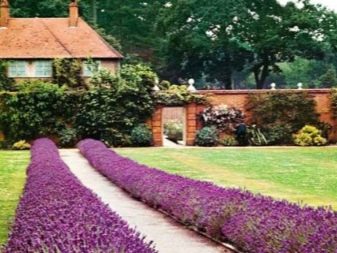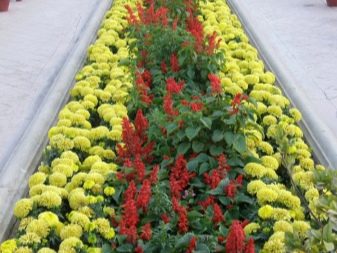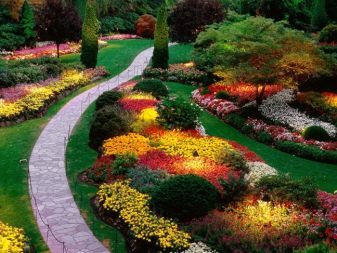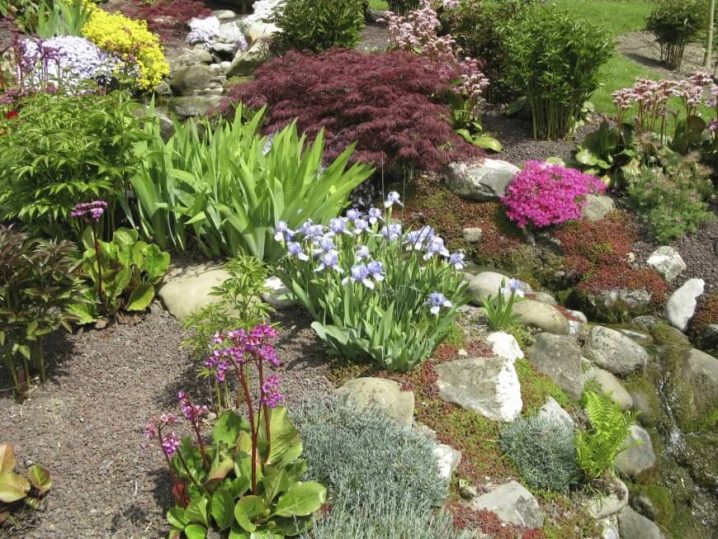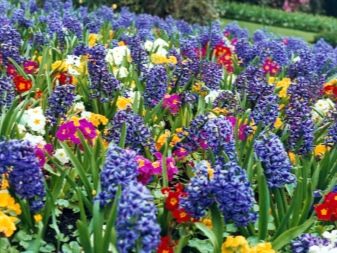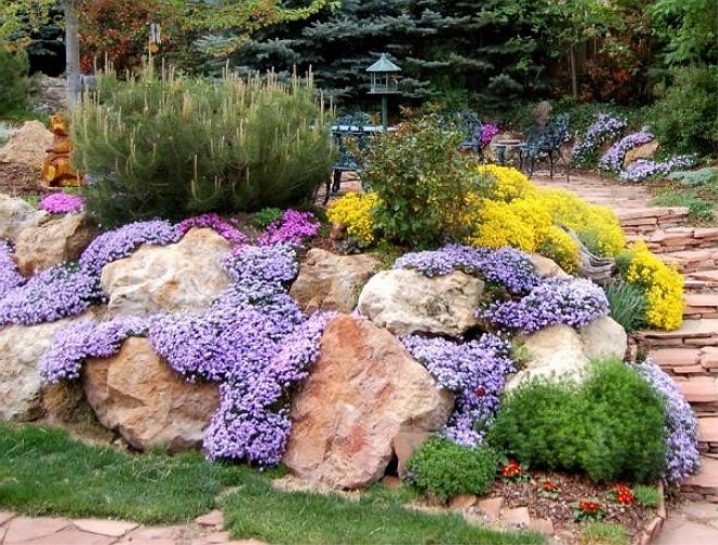Plants of spring flower gardens: types and names
Flowers, as a symbol of beauty, are loved all over the world. About them since ancient times were composed legends, poems and songs. With the help of colors you can express your emotions and feelings. For example, a rose is considered a symbol of love, a carnation is a symbol of loyalty, and forget-me-not is a memory of a loved one. Many other flowers are symbols of human senses.
In this article we will talk about spring plants for flower arrangements.
Kinds
Flowering in spring plants in their structure and properties belong to the herbaceous perennials. In form, they are divided into rhizomatous, bulgaric, bulbous and bush.
Rhizome and shrub perennials form flower shoots in the fall. Next year, in the spring, after a short growth, they bloom.Propagate them with seeds, cuttings, divide the rhizomes.
Bulbula plants form new organs each year (both underground and aboveground). At the top of the old corm from the thick lower parts of the leaves grows a daughter of corm. In the year of flowering of the mother plant, the beginnings of flowers are laid.
Bulbous plants are usually ephemeroids. For a short spring, they manage to form leaves and bloom. Then, by the middle of summer, their above-ground part disappears, and the bulb remains in the ground and the inflorescences are laid in it for the next year.
Perennial spring plants each year form new above-ground shoots, and flowers and leaves emerge from the renewal buds. Only underground organs remain to winter.
Spring flowers have good cold resistance. Some of the bulbous ones begin to bloom as soon as the snow melts, at low temperatures above zero.
What flowers are more common?
We give the name and a small description of some spring plants.
Crown Anemone - A plant native to southern Europe, Asia Minor and Africa. This is a perennial herb bulbous bulbous plant.Her flowers are very beautiful, large, can be both simple and terry. The color of flowers is different, the size of a flower is 7 cm. It is propagated by sowing seeds into the soil or by dividing tubers. Soils like loamy, fertile with good water permeability. The plant is required to cover for the winter or dig up the tubers after the end of the growing season. Dug tubers are stored at about 4 degrees.
Astra alpine - A plant from America, Eurasia and Africa. It is a perennial rhizomatous plant about 30 cm in height. It forms a short, richly blossoming dense bush. The flowers are purple, pink, carmine, white. Flowering continues from late May to mid-June. Propagated by sowing seeds, cuttings or divide the rhizomes. It grows in places open to the sun, the soil loves fertile, loamy.
Periwinkle originally from Western and South-Western Europe. It is a perennial plant with shoots up to one meter in length. It blooms in May with small flowers of pale blue color. Periwinkle grows smooth, green carpet, which winters under the snow.
The plant propagates by spring division of shoots.Periwinkle is frost-resistant, likes penumbra, grows on light, well-fertilized soils, does not like overmoistening.
Spring blossom - plant from Central Europe. It is a perennial bulbous plant about 30 cm in height. Flowering occurs in April in the form of wide-bell-shaped flowers, with white or yellow spots at the ends of their petals. The plant has a delicate aroma.
Propagated by seeds and young daughters bulbs. It grows on fertile permeable soils. Billowberry moisture-loving, grows in lowlands near water bodies in partial shade.
Aquilegia come from Europe, Asia and America. The height of this perennial plant is up to 40 cm. It blooms in May, the flowers have different colors. Propagated by seeds, cuttings and division of the bush. Aquilegia frost-resistant, like moisture, grow well in semi-shady places on any soil.
Pink Clove - origin from Europe, Asia and America. It is a soddy-ragged, rhizomatous low plant. Blooms with single fragrant flowers of white or red. It has fringed petals. Flowering begins in mid-May. Propagated by seeds and cuttings.Loves bright and open to the sun places. Soils prefer loamy, fertile. The plant is cold-resistant.
Eastern Hyacinth originally from Iran, Asia and the Mediterranean. Perennial bulbous plant up to 30 cm high. On the peduncle there are bell-shaped flowers of various colors, simple or double. The plant is very fragrant. Reproduces kids and scales of bulbs. Hyacinths prefer light sandy soil with the introduction of humus. They are planted in sunny, sheltered places. Relatively hardy, but in very cold winters can freeze slightly.
Dicentra origin from North America. Herbaceous plant up to 30 cm. Flowers can be pink or white, they are located in short inflorescences. Flowering begins in May. Propagated by spring division of the bushes or green cuttings in the summer. The plant is winter-hardy, grows on nutritious, loose soils. Does not tolerate dry soil, shade tolerant.
Doronicum - a popular early flowering plant. Flowering occurs in May, bright flowers glowing yellow. The soil is suitable for it loose, clay with the addition of organic fertilizers.It grows on light and semi-shady places.
Iberis - an indispensable shrub for stony gardens. His white flowers are gathered in a tight umbrella. Widely grows, forming a dense carpet, blooms in May and June. It grows in a sunny warm place. The soil for it should be dry, permeable, with a small amount of humus. Propagated by cuttings, rooted shoots, seeds.
Iris dwarf come from the south of Europe. Perennial rhizomatous plant with peduncles up to 15 cm high. It blooms in early May with yellow or blue single flowers. Propagated by sowing seeds or division of rhizomes.
Crocus comes from Central Europe, Asia, the Mediterranean, the Crimea, the Caucasus. The original bulbous perennial up to 17 cm in height. The flower appears even before the formation of leaves of the corm. Usually, one or two flowers of a white, purple, orange or yellow color of funnel-shaped form and 2.5 cm long appear on one plant. It blooms in April. Propagated by corms or seeds. It prefers sunny places and light nutritious soil.
Bath room - extraordinarily beautiful plant. She has bright yellow spherical flowers on strong peduncles.Bathhouse has a delicate aroma. It blooms from late May to June. It grows in a half-shady hot spot. The soil requires moist, nutrient-rich.
May lily of the valley come from Eurasia. It is a perennial rhizome plant. It blooms in May, drooping small white flowers. Lily of the valley - a very fragrant plant. Propagated by dividing rhizomes in late summer or early spring. It grows well in the shade of shrubs on well-fertilized, light and moist soil.
Lungwort - herbaceous plant up to 30 cm in height, recommended for creating cover under the trees, shrubs and in the shaded parts of the garden. It blooms in April-May, lilac-blue flowers. It prefers loose soil with humus content.
Hellebore - delicate spring flowers, revealing their white, pink or red flowers immediately after the snow melts. Forms a lush bush up to 40 cm tall and grows in one place for many years. Grow it in a partial shade and a cool place. The soil needs fresh, rich in humus, clay, neutral.
Narcissus originally from southern Europe and the Mediterranean. This is a perennial bulbous plant with a height of up to 50 cm. The flowers are mostly white and yellow.Flowers can be both simple and terry. It has a strong aroma. Propagated by dividing the bulbs. Prefers open spaces to the sun and breathable neutral soils.
Fritillaria imperial come from Asia. Perennial bulbous plants up to one meter in height. The flowers are bell-shaped, drooping, form an umbellate inflorescence. Above the inflorescence is a bunch of leaves. Perianth is yellow, orange and brick tones. Blossoms in May. Propagated by sowing seeds in the soil and bulbs. It grows on light, moist and fertile soils in partial shade in a place closed from cold winds.
Tulip - Its wild forms are common in Central Asia. It is a bulbous plant with an erect stem, on which are large beautiful flowers of bright colors, there are also white. According to their shape, tulips are divided into lily, goblet, cup-shaped and others. There are terry or simple.
Tulips are propagated by seeds or bulbs. Grown in well-lit sunny places, protected from the wind. Prefers sandy or loamy light soils, sufficiently moist.
Violet horned or viola origin from Europe. It is a perennial herbaceous plant with a height of up to 30 cm. Flowers of bright colors or white, bloom in May. Propagated by seed or cuttings. It grows on well-fertilized soils.
Kinds of flower beds
- Flower Border in the form of a line with a width of 10-30 cm from one or several rows of flowers - a common version of the flower bed design. For such a flower bed suitable low compact flowering plants. Used to give clarity to ridges, mixborders, groups, flowerbeds, etc.
- Rabatka - a strip 50-100 cm wide, completely planted with flowers. This flower garden is in the form of a specific pattern with alternating colors in appearance and color. Have ridges along the tracks, fences, ponds.
- Tapeworm - detached plants. For soliter plantings use tall plants-accents (peonies, hazel grouses, diccenters). Spectacular tapeworms emphasize other, lower plants, create volume. Solitary tapeworms look great on green lawns.
- Group - free picturesque planting of flowers on the area from two to thirty square meters. Such planting is placed inside the designated area.The contours of the group are made winding. Groups are simple (from one plant species) or complex (from several).
Groups are placed in the foreground near paths, reservoirs, in front of bushes, along walls. For groups suitable plants for a long time retaining decorative.
- Flower bed - The plot of the correct form, planted with ornamental plants. Most often, flower beds are made in parks, in front of administrative buildings, in city squares. The flower bed can be from one plant species or several.
- Mixborder - mixed rabatka. It is a pictorial strip 2-4 m wide, filled with decorative deciduous and flowering plants located in spots or geometric pattern. Mixborders may be irregularly oblique.
How to make?
One option for the design of a flower bed can serve as rockeries. It is a small area of approximately 5-6 square meters. m, where among the stones planted ornamental plants. This is an interesting option for registration of country and suburban areas, gardens and parks.
Especially good rockeries will look with a natural uneven terrain.Depending on the location on such flower beds, they are planted as sun-loving (Sedum, awl-shaped phlox, Armeria, irises, primroses, obriety, dicenters), and shade-tolerant plants (kupeny, aquilegia, etc.).
Springarium - A small cheerful garden with spring bulbous, bulbotube and rhizomatous plants. Snowdrops grow before everyone in the open isles of the sun, behind them appear crocuses, Scylla, crested and hionodoksy. Then muscari, hyacinths, daffodils and tulips appear. Still later, the styloid phlox, obriet, liverwist, viola, forget-me-not and daisy bloom.
Alpine Hill - plot reserved for mountain plants. On this site, arrange the track, make terraces and stairs. Elements of the equipment can serve as stones, ponds with waterfalls, streams. Plants grown on alpine slides are considered unpretentious. For the rock garden, the following spring plants are recommended: styloid phlox, periwinkle, obriet, gentian, etc.
Care rules
Even the most unpretentious colors require care. Its main elements are:
- Landing different for each type of plant, but there are general rules:
- do not plant in too hot, sunny and windy weather;
- do not plant plants in too wet soil;
- seedlings annuals planted after the threat of frost;
- biennials planted in early autumn;
- bulbs and tubers are usually planted to a depth of 3 times their size.
- Mulching - Covering the soil with a layer of bulk organic material. This event allows you to retain moisture under a layer of mulch, reduce weed growth, fertilize the soil and protect it from freezing in winter.
- Watering required by each plant, but in varying degrees. It is preferable to water rainwater from a watering can or using a hose with a spray. Do not pour cold water. The best time for watering is early morning or evening. For deeper soil moistening it is better to water once abundantly, than often a little.
- Pruning performed individually for each species. If you want to prolong flowering, then remove faded flowers.
- Winter protection - plant shelter covering material, spruce, dry foliage. Shelter should be carried out when installing stable weather with low temperatures.
- Top dressing - adding substances necessary for plant nutrition to the soil. For perennials, organic fertilizers (cow and horse manure, humus, compost) and mineral (nitrogen, phosphate and potash) fertilizers are most often used for fertilizing. Mineral fertilizers should be applied in accordance with the instructions on the package. Excessive amounts of mineral fertilizers can lead to weakening of the plants. Top dressing is carried out individually for each type of plant.
- Plant protection from diseases and pests.
Making a flower bed is a very exciting activity that brings a lot of positive emotions. We hope that our article has helped you decide on the choice of plants for your spring flower bed.
Create a flower garden, taking into account the rules of landscape design can be learned by watching the following video.
